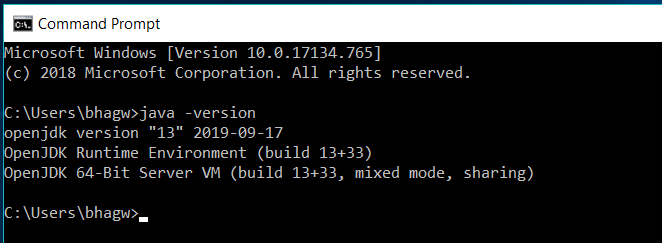

- #Now generally openjdk available microsoft source for free
- #Now generally openjdk available microsoft source archive
- #Now generally openjdk available microsoft source pro
- #Now generally openjdk available microsoft source code
- #Now generally openjdk available microsoft source free
It’s optimized for Linux server deployments and designed for enterprise applications and workloads that require large memory, high transaction rates, low latency, and consistent response times. Per Azul, thanks to Zing, “…Java apps can scale to high levels of performance with unprecedented response time consistency and meet your most demanding service level requirements – without application changes or even recompilation.”Īzul also claims that Zing is the “only JVM that eliminates Java garbage collection pauses for large heap sizes” and solves issues with GC that have plagued developers since Java’s inception. Azul Platform PrimeĪzul Platform Prime, formerly Zing, is fully TCK compliant with the Java SE 11, 8, or 7 specifications. … We are now excited to continue building on this work by producing binaries based on OpenJDK 11 for 圆4 platforms covering the three major operating systems and to share this work with the Java community and our Microsoft Azure customers.” Regarding TCK compliance, Microsoft reports that “Our binaries for Java 11 have passed the Java Technology Compatibility Kit (TCK) for Java 11." 2. Per Microsoft: “Over the past 18 months, we contributed more than 50 patches covering areas such as MacOS packaging, build and infrastructure, GC fixes, and enhancements for Windows.

#Now generally openjdk available microsoft source pro
They’re also publishing an early-access binary for Java 16 for Windows on ARM, based on the latest OpenJDK 16+36 release, and providing a port to Windows ARM ( JEP-388 ) for Surface Pro X. It’s TCK compliant for Java 11 and includes binaries for Java 11, based on OpenJDK 11.0.10+9, on 圆4 server and desktop environments on macOS, Linux, and Windows.
#Now generally openjdk available microsoft source free
It’s an open-source, no-cost long-term support (LTS) distribution of OpenJDK that is free for anyone to deploy anywhere.
#Now generally openjdk available microsoft source code
They are essentially providing Windows-specific optimizations that haven’t made it back to the OpenJDK source code yet. Microsoft just announced its own OpenJDK build. Here’s a run-down of the most commonly used ones and their primary offerings. With all these choices, we felt like it was a good time to review the currently available OpenJDK builds. And others (e.g., Zulu and AdoptOpenJDK) appear to be trying to become a non-Oracle supplier of builds with their own (ostensibly cheaper) support contracts. Others (e.g., Zing and OpenJ9) are adding technology in some way. Some of them (e.g., Microsoft, Red Hat, and Amazon Corretto), seem to have a self-serving purpose-namely, to help Java run better (or at all) on their own technology. Now, well into 2021, we’re at the point where there are many alternatives to the original Oracle JDK build.
#Now generally openjdk available microsoft source for free
Microsoft Windows uses the latest available CA certificate from Red Hat Enterprise Linux.Ever since Oracle, in 2018, split its JDK build licensing into two tiers-commercial, which can be used for free in development and testing but you have to pay to use it in production, and open-source, which is free in any environment-quite a few open-source builds based on the OpenJDK source code have appeared. Microsoft Windows includes the latest available timezone data from Red Hat Enterprise Linux. Red Hat Enterprise Linux uses system-wide CA certificates. Red Hat Enterprise Linux uses system-wide timezone data files as a source for timezone information. The src.zip file includes the source for all of the JAR libraries shipped with OpenJDK.

RHEL also dynamically links against Harfzbuzz and Freetype for font rendering and management.
#Now generally openjdk available microsoft source archive
Red Hat Enterprise Linux dynamically links against native libraries such as zlib for archive format support and libjpeg-turbo, libpng, and giflib for image support.
This change does not apply to OpenJDK builds for Microsoft Windows. You can set different security profiles to balance safety and compatibility. Red Hat OpenJDK 17 obtains the list of enabled cryptographic algorithms and key size constraints, which are used by for the TLS, a certificate path validation, and signed JARs, from the Red Hat Enterprise Linux system configuration. This change does not apply to OpenJDK builds for Microsoft Windows.Ĭryptographic policy support. Red Hat OpenJDK 17 automatically detects whether the RHEL system is in FIPS mode and automatically configures OpenJDK 17 to operate in that mode.


 0 kommentar(er)
0 kommentar(er)
